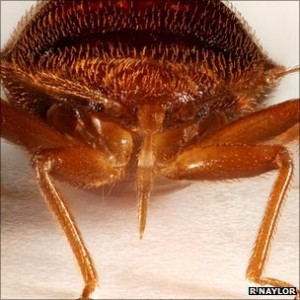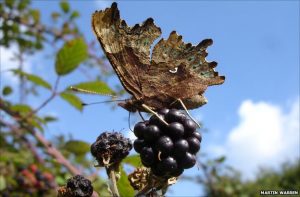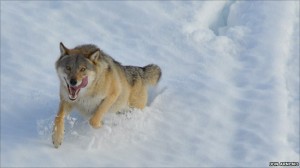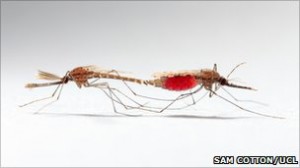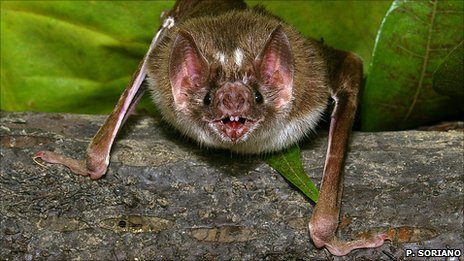New research sheds light on the world’s most specialised bird perch.
The researchers suspect that the vertical, branchless stem of a South African plant – locally called the Rat’s Tail – has evolved to encourage pollinating birds to visit its flowers.
The birds hang upside down from this perch and fertilise the plant when they thrust their beaks into the red flowers to drink nectar.
The international team reports the findings in the Annals of Botany.
Plants go to great lengths to attract animals to pollinate them; they seduce insects, birds and small mammals with colourful, shapely, sweet-smelling flowers.
Some plants even wave at passing pollinators.
On first seeing the deep red, long-tubular flowers of Babiana ringens in 2003, botanist Spencer Barrett from the University of Toronto, Canada, suspected that he was dealing with a plant that was pollinated exclusively by birds.
But the position of the flowers at the base of the plant perplexed him.
Most birds avoid feeding on or close to the ground to keep clear of ground-dwelling predators; plants reliant on bird-pollination tend to keep their flowers up high.
Dr Barrett and his colleague Bruce Anderson from University of Stellenbosch in South Africa, wondered if the curious perch-like structure had evolved to give pollinating birds a foothold from which to feed.
Crouching among the shrubs of the Cape of South Africa, binoculars in hand, Dr Barrett and his team confirmed that the flowers were exclusively pollinated by sunbirds.
“When we saw a bird visiting we were completely enchanted,” said Dr Barrett.
Relaxed selection
Still unconvinced that the stick-like protrusion had evolved as a perch, the team set about to gather further evidence.
They set out to look at the full distribution of B. ringens across the Cape, and found that in the east, where sunbirds have a greater variety of flowering plants to choose between, B. ringens‘ perches were smaller than in the west, where plants can rely on regular visits from sunbirds.
Dr Barrett suspects that in the absence of pollinating birds, the plants do not need to invest in maintaining the perch, and so it shrinks over many generations – an example of what is called relaxed selection.
With time, this branch might return to its ancestral form, which the researchers suspect was a central stem with flowers at its top, much like many of B. ringens’close relatives.
“It’s a fascinating piece of work,” said plant biologist Professor Simon Hiscock from the University of Bristol.
This study poses questions about the influence of pollinators on the structures of flowers and on plants’ reproductive strategies, he added.
:: Read original here ::

